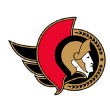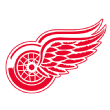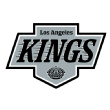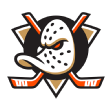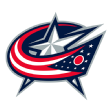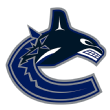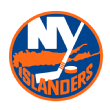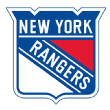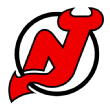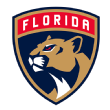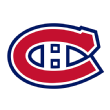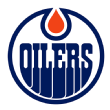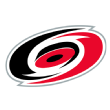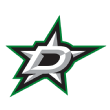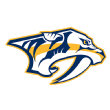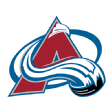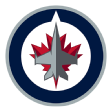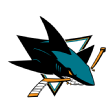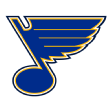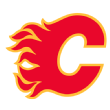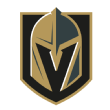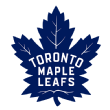Ranking all 31 NHL teams by their forwards

As part of our preseason preview series as we tune up for the start of the 2019-20 NHL season, we're going to rank all 31 teams based on their various position groups. We're going to start off with the forwards here and count them down from 31 to 1:
Jump to a team:
ANA | ARI | BOS | BUF | CGY | CAR | CHI
COL | CBJ | DAL | DET | EDM | FLA
LA | MIN | MTL | NSH | NJ | NYI
NYR | OTT | PHI | PIT | SJ | STL
TB | TOR | VAN | VGS | WSH | WPG
31. Ottawa Senators
Brady Tkachuk was excellent as a rookie, not only validating Ottawa's decision to draft him fourth overall but also making the fact that they had to surrender their first-round pick this past year as a result far more palatable. If there's one reservation about proclaiming him as their savior it's that his underlying numbers sank after the departure of Mark Stone at the deadline:
- With Mark Stone at five-on-five: 515 minutes, 52.4% shot attempt share, 52.2% shot on goal share, 56.9% goal share, 58.5% expected goal share
- Without Mark Stone at five-on-five: 105 minutes, 43.9% shot attempt share, 42.7% shot on goal share, 33.33% goal share, 50.4% expected goal share
It's certainly no surprise that he struggled as a teenager without the help of one of the league's premier five-on-five players. He'll be better prepared for life as "the guy" in his second season, and the Senators will need him to be. This is a group without many players that can create for themselves offensively, let alone others.
30. Detroit Red Wings
Dylan Larkin desperately needs some help. Last season, only Connor McDavid and Leon Draisaitl logged more minutes among forwards at five-on-five, and only eight players at his position averaged more total minutes on a nightly basis. He was ninth in shots on goal (287), 35th in goals scored (32), and 42nd in points (73) despite missing six games. In terms of impact on underlying metrics relative to his teammates, no one had a greater positive impact on their team's shot share than he did, and only seven players had a bigger influence on their team's expected goals.
The combination of Larkin and Anthony Mantha is excellent, but beyond that, the Red Wings' only real chance of generating anything resembling consistent offense right now is Andreas Athanasiou breaking free on the rush and doing it himself.
29. Los Angeles Kings
There are plenty of reasons for concern about this incarnation of the Kings, but one I wasn't expecting prior to looking more closely at last year's numbers: Anze Kopitar's decline. It's not just that he's coming off of his second down season in the past three, it's the way in which it happened. Unlike in 2016-17 when most of his struggles could be hand-waved by a career low 8% shooting percentage -- which rebounded the following season when he scored 35 goals -- there's a lot of red flags in his underlying numbers.
Last season marked the first time his five-on-five shot and goal metrics have really cratered, and boy did they ever. Normally one of the league's most dominant territorial play drivers, the Kings controlled just 46.5% of the shot attempts, 45.1% of the goals and 45.6% of the expected goals with him on the ice. The most shocking part was that he was a net negative in all of those figures relative to his teammates for the first time ever, which is stunning considering how bad the rest of those teammates were. You never want to write off a player of his caliber with the type of track record that he has, but at age 32 with north of 1,000 NHL games under his belt, it's fair to start wondering how much he has left in the tank. With four more years at a cap hit of $10 million annually left to be paid out, this conversation is happening far sooner than the Kings were surely hoping it would.
28. Arizona Coyotes
Last season the Coyotes were led offensively by Brad Richardson's 19 goals and Clayton Keller's 47 points, which will undoubtedly need to improve if they hope to match last season's surprising success, let alone build on it. They're banking on two things: better health and Phil Kessel providing them with a shot in the arm.
One area where Kessel could have the most profound impact is on the power play, which has been his bread and butter in recent years. The 108 points he has on the man advantage over the past three seasons are only exceeded league-wide by Nikita Kucherov, and account for 44% of his overall total. He'll find it tough to match that kind of production without Pittsburgh's array of weapons, but his dual-threat ability should still do wonders for Arizona's 26th-ranked power play.
27. Anaheim Ducks
It likely won't lead to any kind of notable immediate results, but I'm cautiously optimistic about the way the Ducks are going about this rebuild. They've drafted well over the years, and they're now trying to turn the roster over to that next wave of talent that's been percolating in their pipeline. The best part is that most of the young players that'll be thrust into the lineup and given sizeable roles already have a connection with head coach Dallas Eakins from their time with Anaheim's AHL affiliate last season (totals include the postseason):
Troy Terry: 41 points 41 games
Sam Steel: 54 points in 69 games
Max Jones: 33 points in 51 games
Max Comtois: 10 points in 16 games
The encouraging thing is that Anaheim appears to have a solid grasp of where they currently sit in the league's pecking order. If they're willing to take the long view and allow all of these players to develop further under Eakins' tutelage, it could really pay dividends down the road.
26. Buffalo Sabres
While it's not groundbreaking material to say that a team was better with its best players on the ice than without them, the degree to which that was the case in Buffalo last season is notable.
- With Jeff Skinner and Jack Eichel: 845:17 minutes, +10 goal differential, 52.4% shot share, 56.6% high danger chance share, 54.7% expected goal share
- Without Skinner and Eichel: 2,504:15 minutes, -34 goal differential, 47.7% shot share, 44.3% high danger chance share, 45.4% expected goal share
With the two of them, the Sabres were not only keeping their heads above water but were actually quite excellent. Without them, they were dreadful, and drowning. The addition of Marcus Johansson to help drive play is big, as are the additions on the blue line. But unlessCasey Mittelstadtcan finally take that leap and live up to all the hype he's garnered as a prospect, this team will continue to be one-dimensional and struggle to score goals whenever Eichel and Skinner aren't out on the ice.
25. Minnesota Wild
If there's one silver lining about the Paul Fenton era in Minnesota, it's that he ultimately didn't get to pull off the brilliant idea of selling low on Jason Zucker despite all of his efforts. He may have fallen back down to 21 goals after scoring 33 the season before, but most of that appears to be shooting percentage-driven. As a player who typically converts on north of 12% of his shots, he did so on south of 10% last season.
As we know, that's never the time to try to trade a player, and considering the rumored returns for the Wild, they're incredibly fortunate that none of those deals ever fully materialized.
24. Columbus Blue Jackets
The loss of Artemi Panarin's ability to soak up the attention of opposing defenses and make plays for both himself and others at a high level will be sorely felt, and the Blue Jackets understandably don't have a natural replacement of his caliber ready to step in. What they do have is impressive scoring depth and balance throughout the lineup, plus some interesting young players with plenty of room to grow into bigger roles:
Cam Atkinson: 25 five-on-five goals, good for 8th best
Pierre-Luc Dubois: 20 five-on-five goals, tied for 28th
Josh Anderson: 20 five-on-five goals, tied for 28th
Oliver Bjorkstrand: 19 five-on-five goals, tied for 35th
Gustav Nyquist: 16 five-on-five goals, tied for 64th
Nick Foligno: 15 five-on-five goals, tied for 79th
That list doesn't include youngsters Emil Bemstrom and Alexandre Texier. The former led the Swedish Hockey League in goal scoring as a teenager, while the latter had 41 points in 55 games as a 19-year-old in the Finnish pro league before a cameo in the playoffs last spring. The Blue Jackets will take a step back this season, but there's still plenty on the team about which to be excited.
23. Vancouver Canucks
Elias Pettersson either scored or directly set up 52 of the 199 goals the Canucks scored in the games he appeared in. That 26.1% offensive contribution would've been good for the 15th highest involved in the league, behind only the following players: Connor McDavid, Leon Draisaitl, Patrick Kane, Sidney Crosby, Tyler Seguin, Nikita Kucherov, Alex Ovechkin, Nathan MacKinnon, Artemi Panarin, Brad Marchand, Mitch Marner, Aleksander Barkov, Jack Eichel.
Not bad company to be keeping, especially as a 20-year-old rookie. The fact that he not only could but should get better is frightening. While names like J.T. Miller and Micheal Ferland aren't necessarily ones that move the needle in their own right, considering the team's options on the wing last year they do represent noticeable upgrades.
22. New York Islanders
Mathew Barzal's sophomore campaign was viewed as a bit of a disappointment individually despite the team's overall success, largely due to the sky-high expectations he'd generated following a prolific rookie season. A big part of the reason why his production dipped was the Islanders power play, which dipped from sixth in scoring efficiency to 29th, which is understandable given the loss of John Tavares.
The underlying numbers at five-on-five were relatively comparable from one season to the next, which is encouraging for his future outlook. The eye test also checked out -- he looked as dynamic as ever with the puck, gliding through the neutral zone and terrorizing opponents with his patience, vision and creativity. If there's one thing I'd like to see in the interest of fully unlocking his potential, it would be for the Islanders to find him a legitimate running mate who can routinely turn the opportunities he creates at a high clip. Here's a full list of some of the wingers he spent at least 40 minutes with at even strength last season: Tom Kuhnhackl, Andrew Ladd, Leo Komarov and Cal Clutterbuck. That's just not going to cut it.
21. New York Rangers
Building your team through the unrestricted free agent market by throwing large sums of money at players in their late 20s is typically risky business, but Artemi Panarin isn't your typical player. Since entering the league he's been a top 10 offensive player by any metric:
- Fifth in five-on-five points
- Fourth in five-on-five goals created (goals plus primary assists)
- Seventh in total points
- Eighth in total goals created
Adding a player of his caliber allows them to move Chris Kreider off of Mika Zibanejad's wing, which in turn gives them a fighting chance at having a legitimate play-driving second line. And he's hardly the only exciting addition to the group of wingers. We need to temper expectations with young players, but Kaapo Kakko andVitali Kravtsoveach have tremendous upside. This will be an exciting group to watch.
20. New Jersey Devils
So much has happened since then, but it hasn't actually been that long in real time since Taylor Hall won the Hart Trophy as league MVP for his dominance in the 2017-18 season. It was hardly anything new for Hall, who has gotten used to having to do all the heavy lifting for his teams during his NHL career. While he certainly returns to a Devils team as its undisputed leader and most important player, it looks like he's going to finally be blessed with an intriguing supporting cast.
Few teams have been as busy as New Jersey this summer in trying to improve their team in an attempt to convince their impending free agent star to stay for the rest of his remaining productive seasons. The jury is still out on whether it'll work or if they've done enough, but adding Jack Hughes, Nikita Gusev, Wayne Simmonds and Jesper Boqvist to the team in one offseason (along with P.K. Subban on the back end) is one hell of a haul (pun intended).
19. Philadelphia Flyers
There's no question that Kevin Hayes was wildly overpaid this season by the Flyers. Not only did they trade a late draft pick for his negotiating rights, but then they proceeded to bid against themselves anyway before landing on a $50 million payday. Despite that, there's also no denying that he immediately makes them a better team than they were previously. He seamlessly slides into the second-line center vacancy they had, serving as the bridge on the depth chart between Sean Couturier and Nolan Patrick.
The Flyers are a lot of things, but being boring is certainly not one of them, as they continue to prove.
18. Chicago Blackhawks
It's so difficult to properly evaluate the Blackhawks because they were such a catastrophic mess defensively last season that all of their numbers are blown out of proportion. The most encouraging sign -- beyond the continued development of Alex DeBrincat into an elite scorer and Dylan Strome's career revival -- is that Jonathan Toews had a much-needed bounce-back season after it looked like his most productive years were behind him. It helps that his shooting percentage rebounded to his career norm after two down seasons, but given the age and mileage it was fair to wonder whether it ever would. After scoring just 20 and 21 goals in the previous two seasons and failing to reach 60 points since 2014-15, he blasted those totals out of the water with 35 goals and 81 points. It's actually quite impressive that he set personal bests in goals, points, and shots on goal at this point after everything he's already accomplished.
17. Florida Panthers
Offense certainly wasn't an issue for the Panthers last season. They scored the ninth-most goals, and had the league's second-best power-play unit after the Lightning. Their five-man unit on the man advantage is particularly special, mostly because of how unpredictable it is with five equally dangerous shooters out on the ice at one time. The only real question is how much of it came at the expense of their work on the other end of the ice, and whether that'll continue under Joel Quenneville.
Despite the fact that Aleksander Barkov wound up finishing fifth in Selke Trophy voting, he wasn't without blame for all of those defensive struggles. It was a down season in that regard compared to his usual lofty standards, and a more well-rounded performance would go a long way toward righting the ship.
The thing to watch with this team is their third line, which features an interesting combination of players -- Frank Vatrano (who broke out with 24 goals last season), Henrik Borgstrom (who is insanely gifted and just waiting to explode), and Brett Connolly (who was productive in Washington but whom they also surely overpaid in free agency).
16. Montreal Canadiens
The Canadiens were surprisingly terrific at five-on-five last season. Only the Sharks, Hurricanes and Golden Knights were better shot share teams, and only the Lightning, Capitals, Leafs and Sharks scored goals more frequently than them. They don't necessarily have a big-name star in the ranks, but they have tremendous depth and a group of forwards that can really skate. For them to take the next step this season, they'll need to sort out their power play, which was the 30th-ranked unit, ahead of just the Predators.
15. Edmonton Oilers
The degree to which the Oilers relied upon Connor McDavid last season was quite literally unheard of. Dating to the start of the 2007-08 season -- which is as far back as we have this information -- here's the largest individual offensive contributions we've seen a player have (calculated by looking at the percentage of the team's goals a player either scored himself or set up directly):
Connor McDavid in 2018-19: 42.4%
Alex Ovechkinin 2007-08: 42.4%
Ilya Kovalchuk in 2007-08: 37.2%
Patrick Kane in 2015-16: 36.8%
Steven Stamkos in 2011-12: 36.6%
Steven Stamkos in 2009-10: 36.2%
Sidney Crosby in 2009-10: 35.2%
Evgeni Malkin in 2011-12: 35.2%
Jarome Iginla in 2007-08: 34.5%
Connor McDavid in 2017-18: 34.5%
Based on their additions this summer, we shouldn't expect that figure to change all that much heading into this season. For the Oilers to get back to the postseason and stop wasting this generational player's most productive years, they'll either need their supporting cast to play better or Connor McDavid to hit an even higher level. As crazy as it sounds, the latter seems more plausible at this point.
14. Carolina Hurricanes
Andrei Svechnikov is one of the players I'm most excited about watching this season. His numbers last season weren't out of this world, but context is important here. He spent most of the year as an 18-year-old, and he didn't get the benefit of any cheap power-play production. Plus, his most common linemates were Jordan Martinook, Lucas Wallmark and Brock McGinn. The Hurricanes understandably eased him into the league, but I expect them to fully unleash him in Year 2.
With Justin Williams' cushy minutes up for grabs at the moment, I'd love to see Rod Brind'Amour take Svechnikov for a spin alongside Sebastian Aho. But even if he has to settle for a second-line gig, the quality of linemates should represent a significant upgrade from last season. He's going to be special, and it's only a matter of time before that happens.
13. Dallas Stars
Tyler Seguinwas one of the Stars players who was most notably called out by the team's CEO in an expletive-filled public tirade. Seguin's counting stat production was certainly below his lofty norms at the time, and it skyrocketed afterward. But contrary to the belief that it was a genius move by the executive lighting a fire under his top player's rear, it was just another reminder that people still seem to struggle with the volatile nature of shooting percentages and regression:
- Before tirade: 38 games, 11 goals, 21 assists, 146 shots, 7.5% shooting percentage
- After tirade: 44 games, 22 goals, 26 assists, 188 shots, 11.7% shooting percentage
- Seguin's career shooting percentage prior to last season: 11.3%
It's funny how that works. Seguin was still a great player despite his perceived struggles early on, and not much changed after the fact. Except that the puck started to go in the net at a rate in line with his career mark.
12. Nashville Predators
The Predators have been openly searching for a second scoring option down the middle to slot in behind Ryan Johansen for years now. They've swung and missed pretty badly on Kyle Turris and Nick Bonino in recent seasons. The next entrant in this contest is Matt Duchene, who is a bit of a polarizing player because he can be overrated in certain circles due to how good he looks when he's scoring, and there's a certain empty-calorie nature to his offensive totals because of what he gives up on the other end of the ice.
That's why it's difficult to know just how much of a difference he'll make in Nashville, and whether he can live up to the vast expectations that have been heaped on his plate. That said, there's no denying that he at the very least brings a certain level of explosiveness to a Predators team that could desperately use a spark after going stale of late.
11. Colorado Avalanche
No single three-man combination spent more time together than the trio ofNathan MacKinnon, Gabriel Landeskog and Mikko Rantanen last season. Given the results, it's hard to blame coach Jared Bednar for riding them to the extent that he did. In those 825 minutes, the Avalanche had 54.4% of the total shot attempts and outscored opponents by a 44-28 margin. If you go all the way back to the season before, those three are now outscoring the opposition 91-55 in their 1,567 minutes together.
Assuming restricted free agent Rantanen eventually signs and is back in the mix, it's fair to suggest that we'll see more of the same from those three. Having only the one scoring line, even if it's as great as the three of them are, isn't enough when you're facing some of the best teams in the league that have the talent and the depth to slow them down enough to feast in all of the other minutes. Which is why it was paramount for them to go out and add Nazem Kadri, Joonas Donskoi andAndre Burakovskythis summer. Who knows how well they'll all ultimately perform in their new home, but it'll be hard for them not to represent a step up from the secondary scoring the Avalanche had last season.
10. Winnipeg Jets
The Jets have a lot of talent up front, but also have a lot of concerns right now. Their blue line is in shambles, and two of their best young players who combined for 64 goals last season -- Patrik Laine and Kyle Connor -- still don't have contracts. But that's unfortunately not all. Even when they were at full health last season, there were some serious warning signs.
From Jan. 1 onward, they were 25th in shot attempts and 29th in shot share, which doesn't really sync up with their status as a top contender. It starts at the top, where the combination of Blake Wheeler and Mark Scheifele wasn't nearly as dominant at five-on-five as they should be. The two of them are undoubtedly talented enough to convert a higher percentage of their looks into goals than most others, but I've got my eyebrow raised when it comes to Wheeler's underlying numbers in particular. He just turned 33, has been quietly declining in that regard for some time now, and is just starting his mega five-year extension. Add it to the steadily growing list of reasons to be concerned about this Jets team.
9. Pittsburgh Penguins
Sidney Crosby had a vintage throwback campaign last season. He was fifth in total points, third in primary points, and no single player had a greater impact on their team's underlying metrics than he did. With him on the ice at five-on-five, the Penguins had a 54% shot share and scored 66% of the goals. The issue is that there's only one of him, and he unfortunately can't be out on the ice at all times.
Without him they were a blundering mess, which was only exacerbated byEvgeni Malkin's uncharacteristically poor showing. With Malkin on the ice, those two figures dipped to 48.8% and 47.3%, which is simply unacceptable for a player of his caliber. It's quite possible that there was some merit to the reports about the rift between Malkin and Kessel, which has since been addressed by the team trading the latter. For the Penguins to reach their full potential, they need Malkin to turn back the clock and reach his.
8. Washington Capitals
You know what you're going to get from this team. Alex Ovechkin should once again miraculously flirt with 50 goals, Evgeny Kuznetsov and Nicklas Backstrom will thrill us with their playmaking, and they'll have one of the most potent power plays in the league. But there are a few questions that are worth exploring:
- Who will play with Ovechkin: Kuznetsov or Backstrom? You can't really go wrong, although there was something comforting about the nostalgia of seeing Ovechkin and Backstrom reunited after the time they spent apart.
- Can Jakub Vrana continue to improve and provide this team with another consistent scoring threat to contend with? His 24 goals and 47 points despite playing just 14 minutes per game (and next to no power-play production) was quite impressive last season.
- How legitimate was the 20-game stretch that Carl Hagelin showed upon arriving in Washington, in which he looked like the old version of himself and was flying around the ice? He was a massive upgrade for both their penalty kill and third line's underlying numbers.
7. San Jose Sharks
Joe Pavelski may have led San Jose in goal scoring last season, but if there's one team that can afford to lose his contribution and not miss a beat it's likely this Sharks team. That's especially true if Timo Meier continues to stay on his current trajectory. Last season he was an absolute nightmare to deal with at five-on-five for opponents, finishing 17th in goals, 20th in points and ninth in shots. In the postseason, he was fourth in points, third in shot attempts, and first by a healthy margin in high-danger chances.
It's been a steady progression for him considering his age and the loaded nature of their depth chart, but he's now got a chance to realistically become the go-to guy on this team and make teams really kick themselves for allowing the Sharks to skirt around their cap troubles and retain him so easily this summer.
6. St. Louis Blues
Jaden Schwartz is one of the league's most obvious bounce-back candidates this season:
- Career prior to last season: 380 games, 827 shots, 113 goals, 13.7% shooting percentage
- Last season: 69 games, 183 shots, 11 goals, 6.0% shooting percentage
Conveniently enough for both Schwartz and the Blues, the bounce-back already started to take place in a big way during last year's postseason. He exploded for 12 goals and 20 points in 26 games, converting on 19% of his shots on goal as he found great chemistry with Vladimir Tarasenko and Brayden Schenn.
Health is and always will be a mitigating factor with him -- he's missed 86 combined games over the past four seasons. But when he's on the ice, he should be far more effective than he was last season. That's a scary thought for the rest of the league considering all of the other weapons the Blues already have.
5. Boston Bruins
Because of how freakishly dominant their top line of Patrice Bergeron,Brad Marchandand David Pastrnak is, the only question in Boston is and always has been about their supporting cast. Losing Marcus Johansson in free agency this summer was a sneaky big loss, because even though he was only around for a short period of time, he was such a game-changer for the Bruins.
The other big deadline acquisition, Charlie Coyle, is still around, and he's looking to build off of his monster playoff run. It wasn't necessarily a surprise that Coyle was so effective given his raw tools and the flashes of brilliance we've seen from him in the past, but there's a big difference between doing it for 24 games and doing it for a full 82. We've never really seen him manage to hold up that level of play for a complete regular season, but if that inspired stretch really was a sign that he's turned the corner it'd be a massive boon for the Bruins.
4. Calgary Flames
This team's top six is sick. Johnny Gaudreau and Sean Monahan are money in the bank, and the Mikael Backlund-Matthew Tkachuk-Michael Frolik line is the Western Conference's version of Boston's top line. The one question mark about that group is Elias Lindholm, who had some interesting splits in his first season with the Flames:
- Before the All-Star break: 51 games, 21 goals, 38 assists, 17.6% shooting percentage
- After the All-Star break: 30 games, 6 goals, 14 assists, 9.5% shooting percentage
- Career shooting percentage before last season: 8.9% shooting percentage
Playing alongside a playmaker like Gaudreau tends to lead to better scoring opportunities and a better conversion rate, but I had some serious questions about Lindholm's offensive ceiling during his time in Carolina, and 50 scorching-hot games aren't enough to convince me he's a new player just quite yet.
3. Vegas Golden Knights
Vegas has two top lines that it can throw out there against anyone and feel good about their chances to dominate play. There's a very select few teams that can say that and mean it, which puts them in the upper echelon. Mark Stone's line with Max Pacioretty and Paul Stastny controlled a whopping 59.9% of the shots, and 68.3% of the expected goals. The three of them are so good that they've bumped William Karlsson's unit down to the de facto No. 2 line, despite their own brilliance (54.2% of the shots and 55.4% of the expected goals).
The name to watch here is Cody Glass. If he can realize his potential sooner than expected and step up into a prominent secondary scoring role for this team, it really fills out their depth chart down the middle by allowing Cody Eakin to play a more defensive role. With a dominant power forward like Alex Tuch on his wing and at his disposal, that transition should be a lot easier.
2. Toronto Maple Leafs
As dynamic as Mitch Marner and John Tavares were as a pairing together last season, it's the other top line in Toronto that I'm more interested in this season. The combination of Auston Matthews, William Nylander and Andreas Johnsson played nearly 175 five-on-five minutes together last season, and their underlying numbers are worth investigating more closely. Despite controlling 56.8% of the shot attempts and sporting a stunning 65.7% expected goal rate, they actually got outscored 12-10 in that time because the Leafs goalies stopped just 86.5% of the shots they faced behind them.
Assuming the trio sticks together moving forward, once that rate normalizes and the goal differential more closely reflects their territorial dominance, they're going to be a real problem. That's especially true for Nylander in general, who caught a lot of flack for his struggles after returning from his holdout, even though many of the problems were caused by statistical aberrations that were out of his control.
1. Tampa Bay Lightning
If there's an offensive category, chances are the Lightning were at the top of it last season. No one scored more goals than they did at five-on-five or the power play. They even scored the fifth-most goals while shorthanded. They had a player hit 128 points, they had two others light the lamp 40 times apiece (including Steven Stamkos turning back the clock and shooting and scoring with the best of them), and they had six other players slot in somewhere between 13 and 29 goals.
As if that wasn't enough, it appears they have another undersized forward on the way who has been overlooked because of his diminutive stature despite producing everywhere he's played. Alex Barre-Boulet clocks in at 5-foot-10, and is now coming off of seasons in which he scored 116 points in 65 major junior games (albeit as an overager), and 68 points in 74 AHL games. Whether it's Barre-Boulet or Alexander Volkov, the organization's ability to keep uncovering and churning out talent from unexpected locations never ceases to amaze.
Related Topics
- SPORTS
- ESPN
- CHICAGO BLACKHAWKS
- EDMONTON OILERS
- NEW JERSEY-DEVILS
- ARIZONA COYOTES
- PHILADELPHIA FLYERS
- LOS ANGELES-KINGS
- MINNESOTA WILD
- TORONTO MAPLE-LEAFS
- VEGAS GOLDEN-KNIGHTS
- WASHINGTON CAPITALS
- PITTSBURGH PENGUINS
- NASHVILLE PREDATORS
- CAROLINA HURRICANES
- WINNIPEG JETS
- ANAHEIM DUCKS
- ST LOUIS-BLUES
- NEW YORK-RANGERS
- COLORADO AVALANCHE
- BUFFALO SABRES
- OTTAWA SENATORS
- COLUMBUS BLUE-JACKETS
- SAN JOSE-SHARKS
- FLORIDA PANTHERS
- DETROIT RED-WINGS
- NEW YORK-ISLANDERS
- VANCOUVER CANUCKS
- NHL
- NHL RANKINGS
- TAMPA BAY-LIGHTNING
- BOSTON BRUINS
- DALLAS STARS
- NHL PREVIEW
- MONTREAL CANADIENS
- CALGARY FLAMES
